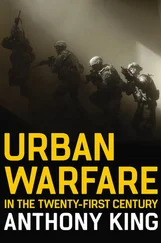After blasting their way through the cordon of tanks and anti-tank guns, the Wiking’s Panthers reached Kovel on 5 April. However, only a tenuous line of communication existed to Kovel and since Hitler would not countenance evacuating the city, Wiking’s limited forces were committed to widening the corridor for the next three weeks. The Wiking Panthers gradually pushed the Soviet infantry back from the western side of the city, but mines and anti-tank guns wore down the SS-Panzer-Regiment 5’s strength. {27} Yet Hitler was pleased, since Kovel was held for another four months. As with Korsun, even when a relief effort was successful, the cost in armour was often much higher than the benefits gained.
The other major relief effort during this period was Model’s attempted relief of Gruppe Neinhoff in Tarnopol. Model knew that it was important for front-line morale not to write-off trapped garrisons and once Hube’s PzAOK 1 was re-integrated into the front he managed to assemble a fairly large relief force by 10 April and selected Hermann Balck’s XXXXVIII Panzerkorps to command the operation. The main assault element was SS-Gruppenführer Wilhelm Bittrich’s 9. SS-Panzer-Division Hohenstaufen , which contributed a battalion of Pz IVs (II./SS-Pz.Rgt.9), a battalion of StuG-IIIs, a reconnaissance battalion, a battalion of Panzergrenadiers in SPWs (III.SS-Pz.Gr.Rgt.19), five other infantry battalions and a self-propelled artillery battalion (6x Hummel and 12x Wespe). Significantly, two-thirds of Hohenstaufen ’s infantry were on foot, lacking motor transport. In addition, the 8.Panzer-Division contributed Kampfgruppe Friebe (I./Pz.Rgt.10) with 21 Panthers, the 8.Panzer-Division provided its SPW battalion (I./Pz.Gr.Rgt.79), s.Pz.Abt.507 added 12 Tigers and s.Pz.Jg.Abt.653 contributed 28 Ferdinands. Altogether, the relief force had 64 tanks, 27 assault guns and 2,000 infantrymen, although it was short of pionier support. Balck kicked off his attack on 11 April from a bridgehead over the Strypa River, but soon ran into stiff resistance from the Soviet 60th Army, which had deployed numerous anti-tank guns and mines along the route. Heavy spring rains turned the soil into mud so deep that German tanks ‘bellied out’ with their hulls, greatly reducing mobility. The 52nd Guards Tank Brigade from the 6 GTC (3 GTA) counter-attacked the German column with some of the new T-34/85 tanks, which was an unpleasant surprise for Hohenstaufen ’s Pz IVs. Even two Ferdinands were destroyed with flank shots. {28} In six days of heavy combat, Balck’s relief force advanced halfway toward Tarnopol, but lost 13 Pz IVs, two Tigers and 21 StuG-IIIs. The Germans claimed to have knocked out 74 Soviet tanks and 21 anti-tank guns. {29} In an impressive display of front-line leadership, Model personally came forward to evaluate the operation’s progress, riding in a Sd.Kfz.251 command track. Nevertheless, it was clear by 15 April that the relief effort had bogged down short of its objective and the Soviets were rapidly reinforcing this sector with more armour. Model finally decided to abort the relief operation 8km short of Tarnopol and he ordered Gruppe Neinhoff to attempt a breakout operation before the town was overrun. Before dawn on 16 April, about 1,300 survivors of the garrison attempted to infiltrate through the Soviet cordon but only 55 reached the positions held by Balck’s XXXXVIII Panzerkorps. Neinhoff was killed in the breakout, as were most of his troops.
Following the efforts to relieve Kovel and Tarnopol, the Germans gained a brief respite due to the spring thaw. Both sides were also exhausted by 10 months of near-continuous fighting. On 4 April, the OKH decided to redesignate Heeresgruppe Süd as Heeresgruppe Nordukraine, with control of PzAOK 1, PzAOK 4 and the 1st Hungarian Army. Heeresgruppe Südukraine was created to control AOK 8, AOK 6, AOK 17 (in the Crimea) and what was left of the Romanian army. Interestingly, the Wehrmacht no longer remained on Ukrainian soil and Heeresgruppe Süd had been split into two pieces. Model believed that once the Soviets rebuilt their tank armies their main effort in the summer would be directed against his army group around L’vov and he used his influence to push for strong Panzer reinforcements to rebuild his command.
Defence of the Dniester Line, 5 April–15 May 1944
By the beginning of April 1944, Heeresgruppe Süd appeared to be broken in two and the Stavka regarded the liberation of the Ukraine as nearly complete. Although all the Soviet fronts were worn down by months of heavy combat, Stalin was eager to continue a broad front advance to seize as much territory as possible before the Germans regained their balance. Given that all four tank armies in the 1st and 2nd Ukrainian Fronts were reduced to 25 per cent or less of their authorized tank strength, a prudent course of action might have been to focus the remaining combat power on one axis of advance and temporarily shift to the defence elsewhere. Yet Stalin was not interested in prudence. He was interested in gaining as much territory as quickly as possible, before the Allies landed in France. Stalin ordered Zhukov’s 1st Ukrainian Front to continue advancing westward toward L’vov and Konev’s 2nd Ukrainian Front to move south into Romania, which meant the two strongest Soviet fronts assumed divergent courses and would no longer be within supporting range. Stalin regarded Romania as a particularly tempting target due to the Third Reich’s dependence upon the Ploesti oil fields and he believed that it was open for the taking.
On 5 April, the Stavka ordered Konev to advance into northern Romania with his 27th and 40th Armies, supported by Bogdanov’s 2 TA, to capture the frontier cities of Jassy and Kishinev. {30} The Stavka ordered Malinovsky’s 3rd Ukrainian Front to assist Konev with the advance into Romania, although the bulk of Malinovsky’s forces were focused on liberating the port of Odessa. Bogdanov could only field about 120 tanks between his 3 TC and 16 TC, but Stalin promised to send reinforcements. However just prior to Konev’s offensive, the Stavka pulled Kravchenko’s 6 TA back into reserve to refit, followed by Rotmistrov’s 5 GTA, leaving very little armour at the front. Consequently, Konev’s advance across the Dniester River into northern Romania began primarily with infantry on foot, supported by fewer than 200 tanks and a bare minimum of artillery support. In effect, the Stavka was repeating the same kind of mistake that it had previously made with Operations Star and Gallop in early 1943.
Second Battle of Tirgu Fromos, 2 May 1944.
There was no doubt that the German and Romanian forces were disorganized after their precipitate retreat from the Ukraine, but Wöhler’s AOK 8 was able to coalesce around Kishinev with five Panzer-Divisionen ( Totenkopf , 3., 11., 13. and 14.Panzer-Divisionen) that proved to be a serious obstacle. At Jassy, the XXXXVII Panzerkorps concentrated Großdeutschland , 23. and 24.Panzer-Divisionen to block an advance by the under-strength 2 TA. In these sectors, the Germans were aided by rough terrain that favoured the defence and rainy weather that greatly slowed the Soviet advance. Inside Romania, the German units had simplified supply lines and received ample supplies of fuel and ammunition.
Nevertheless, the 27th Army advanced fairly rapidly into northern Romania, easily dispersing small Romanian rearguards and its 3rd Guards Rifle Corps (3 GRC) was able to capture the vital road junction at Tirgu Fromos on 9 April. Wöhler reacted by ordering Großdeutschland to conduct an immediate counter-attack in conjunction with the Romanian IV Army Corps to retake the town. Despite its involvement in heavy combat since Zitadelle , the Großdeutschland was one of the few mechanized units on the Eastern Front that the OKH had kept up to strength; in this, the fact that the division could recruit from across Germany, like the Waffen-SS, gave it an advantage over the Heer’s other Panzer-Divisionen, whose replacements were derived from home Wehrkreis. By early April 1944, Großdeutschland was still a formidable force with about 45 operational tanks (a mix of Pz IV, Panthers and Tigers), 25 assault guns and 1,600 Panzergrenadiers. {31} Under the leadership of the firebrand Generalleutnant Hasso von Manteuffel, Großdeutschland conducted a rapid 40km march toward Tirgu Fromos, which caught the Soviet 27th Army completely by surprise. Von Manteuffel attacked with his Panzergrenadiers and Panzers on the morning of 10 April and recaptured Tirgu Fromos by evening, isolating three rifle divisions from the 3 GRC. Since von Manteuffel lacked the troops to surround the 3 GRC, the Soviet divisions were able to escape, but abandoned much of their equipment. Having cleared the area, von Manteuffel rapidly established a new defensive hedgehog around Tirgu Fromos, with his Panzergrenadiers digging in on the perimeter and his tanks kept as a mobile reserve. Once secure, von Manteuffel mounted an active defence for the next three weeks, using company-size armoured raids to keep Konev’s forces off balance.
Читать дальше
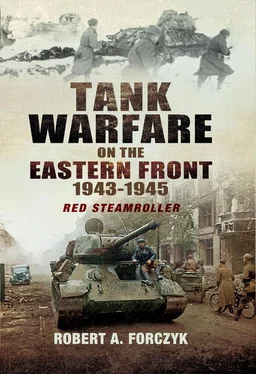



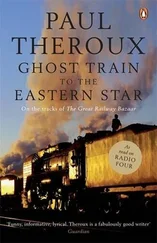
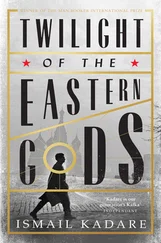
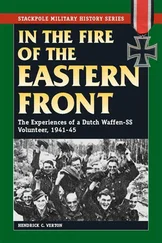

![John Stieber - Against the Odds - Survival on the Russian Front 1944-1945 [2nd Edition]](/books/405234/john-stieber-against-the-odds-survival-on-the-russian-front-1944-1945-2nd-edition-thumb.webp)


